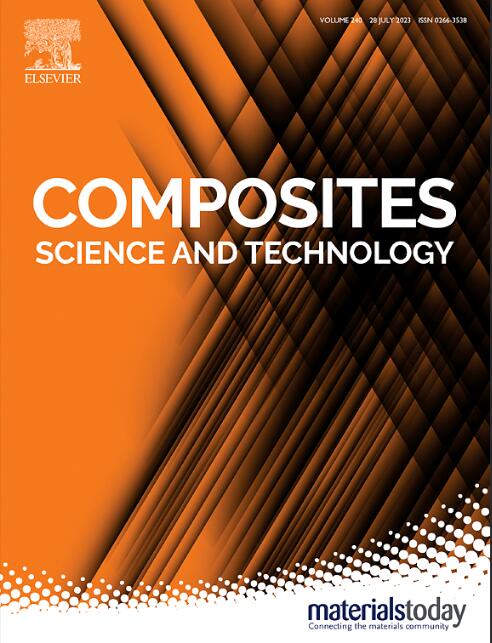3D-printed graphene skeletons for highly-efficient thermal conductivity enhancement and superior compressibility of thermal interface composites
IF 9.8
1区 材料科学
Q1 MATERIALS SCIENCE, COMPOSITES
引用次数: 0
Abstract
Enhancing thermal conductivity of polymer-based composites while maintaining high compressibility remains a critical challenge in developing high-performance thermal interface materials (TIMs). In this study, we constructed multi-scale porous graphene skeletons using a 3D printing technique and subsequently infiltrated them with polydimethylsiloxane (PDMS) to first fabricate 3D-printed graphene/PDMS composites. The obtained composites achieved thermal conductivity of 0.83 W/m·K at a graphene loading of only 2.75 wt%, corresponding to an impressive thermal conductivity enhancement efficiency of 195 %. These results demonstrate the remarkable effectiveness of the 3D-printed graphene skeleton in greatly improving thermal conductivity at extremely low filler loadings. Furthermore, the composites exhibited excellent compressibility, with low compressive modulus of 0.42 MPa. These superior performances are attributed to the continuous heat transfer pathways, highly-integrated skeleton, low interfacial thermal resistance, and multi-scale porous structures of the skeleton. This work provides a novel strategy for fabricating high-performance TIMs with integrated structural and multifunctional properties.

3d打印石墨烯骨架,用于高效导热增强和热界面复合材料的优越可压缩性
提高聚合物基复合材料的导热性,同时保持高压缩性仍然是开发高性能热界面材料(TIMs)的关键挑战。在这项研究中,我们使用3D打印技术构建了多尺度多孔石墨烯骨架,随后用聚二甲基硅氧烷(PDMS)渗透,首先制造出3D打印的石墨烯/PDMS复合材料。在石墨烯负载仅为2.75% wt%的情况下,复合材料的导热系数达到0.83 W/m·K,导热系数增强效率为1955%。这些结果证明了3d打印石墨烯骨架在极低填料负载下大大提高导热性的显着有效性。此外,复合材料具有良好的压缩性能,压缩模量为0.42 MPa。这些优异的性能归功于连续的传热途径、高度集成的骨架、低界面热阻以及骨架的多尺度多孔结构。这项工作为制造具有集成结构和多功能特性的高性能TIMs提供了一种新的策略。
本文章由计算机程序翻译,如有差异,请以英文原文为准。
求助全文
约1分钟内获得全文
求助全文
来源期刊

Composites Science and Technology
工程技术-材料科学:复合
CiteScore
16.20
自引率
9.90%
发文量
611
审稿时长
33 days
期刊介绍:
Composites Science and Technology publishes refereed original articles on the fundamental and applied science of engineering composites. The focus of this journal is on polymeric matrix composites with reinforcements/fillers ranging from nano- to macro-scale. CSTE encourages manuscripts reporting unique, innovative contributions to the physics, chemistry, materials science and applied mechanics aspects of advanced composites.
Besides traditional fiber reinforced composites, novel composites with significant potential for engineering applications are encouraged.
 求助内容:
求助内容: 应助结果提醒方式:
应助结果提醒方式:


